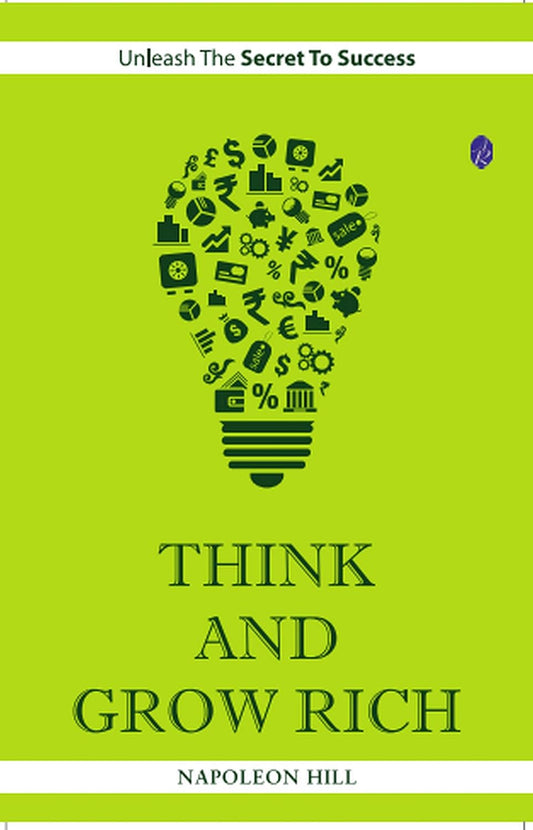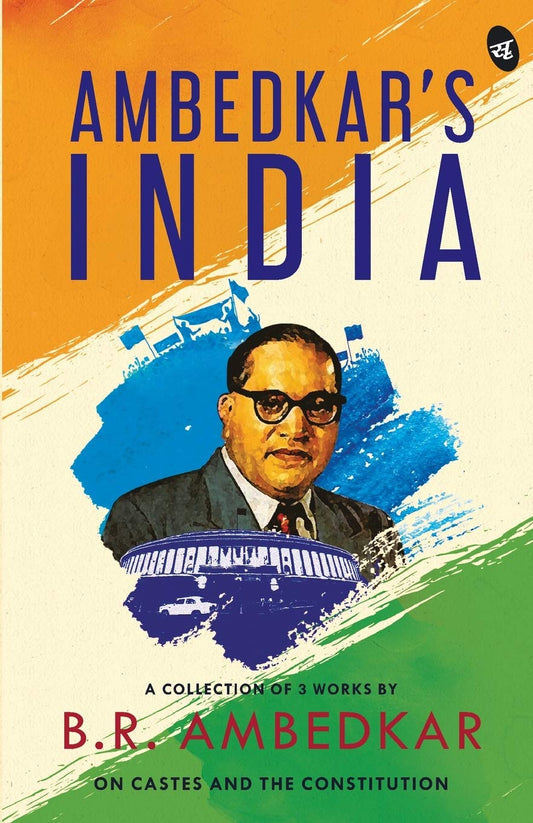Have you ever noticed that the cab ride that cost ₹150 yesterday suddenly costs ₹350 today? Or discovered that the flight ticket you were considering at ₹8,000 jumped to ₹12,000 when you returned to book it an hour later? If you've felt frustrated by these seemingly random price changes, you've encountered surge pricing – one of the most misunderstood aspects of modern online shopping.
Recent studies show that over 70% of Indian consumers have experienced unexpected price increases while shopping online, yet most don't understand why this happens or how to protect themselves. Many shoppers assume they're being cheated or that websites are deliberately trying to overcharge them, leading to frustration and poor purchasing decisions.
The reality is that surge pricing affects almost every aspect of digital commerce today – from ride-sharing and food delivery to flight bookings, hotel reservations, and even everyday products on e-commerce platforms. What seems like random price fluctuation is a sophisticated system designed to balance supply and demand in real-time.
Understanding surge pricing isn't just about satisfying curiosity – it's about becoming a smarter shopper who can anticipate price changes, time purchases strategically, and avoid paying premium rates unnecessarily. In this comprehensive guide, you'll discover how surge pricing works, why businesses use it, and most importantly, how to navigate it successfully to save money and make better purchasing decisions.
What Is Surge Pricing?
Surge pricing is a dynamic pricing strategy where businesses automatically adjust prices in real-time based on current demand, supply availability, and market conditions. Instead of maintaining fixed prices, companies use algorithms to increase or decrease costs based on factors like time of day, weather conditions, local events, inventory levels, and customer behavior patterns.
Think of surge pricing like the vegetable market near your home. During festivals or when supply is limited due to weather conditions, vendors naturally charge more for the same vegetables. When there's an abundant supply and fewer customers, prices drop. Surge pricing applies this same principle to digital services and products, but uses sophisticated technology to make these adjustments automatically and instantly.
The term "surge" specifically refers to temporary price increases during high-demand periods. However, the broader concept includes both price increases and decreases – it's really about dynamic pricing that responds to changing market conditions. When demand exceeds supply, prices surge upward. When supply exceeds demand, prices can drop below normal rates.
Surge pricing differs from traditional pricing models, where businesses set fixed prices and adjust them occasionally through sales or promotions. With surge pricing, algorithms continuously monitor multiple variables and adjust prices multiple times per day, or even per hour, to optimize revenue and manage demand.
This pricing model has become increasingly common in India as more businesses move online and gain access to real-time data about customer behavior and market conditions. From transportation and food delivery to entertainment and retail, surge pricing now affects millions of daily transactions across the country.
Understanding that surge pricing is a systematic business strategy rather than random price manipulation helps you approach it strategically. Companies aren't trying to cheat you – they're trying to balance supply and demand efficiently while maximizing their revenue.
How Surge Pricing Works
The mechanics of surge pricing involve sophisticated algorithms and real-time data analysis that most consumers never see, but understanding these processes helps you anticipate and navigate price changes more effectively.
Real-Time Data Collection and Analysis: Surge pricing systems continuously collect massive amounts of data, including current demand levels, available supply, competitor pricing, weather conditions, local events, traffic patterns, and historical purchasing trends. Advanced algorithms process this information to predict optimal pricing strategies that balance customer demand with business objectives.
For transportation services, algorithms monitor factors like the number of active drivers, current ride requests, traffic conditions, weather, and special events happening in specific areas. When a cricket match ends and thousands of people simultaneously request rides from the same location, the system detects this surge in demand and automatically increases prices to encourage more drivers to work and discourage non-essential trips.
Algorithmic Price Adjustment: Modern surge pricing uses machine learning algorithms that become more sophisticated over time. These systems learn from past pricing decisions and their outcomes, gradually improving their ability to predict optimal prices for different situations. The algorithms can process hundreds of variables simultaneously and make pricing decisions in milliseconds.
Geographic and Temporal Segmentation: Surge pricing often varies by location and time with incredible precision. The same service might have different prices in different neighborhoods of the same city, or even on different streets within the same area. Time-based variations can be equally granular – prices might change every few minutes based on evolving conditions.
Supply and Demand Balancing: The fundamental goal of surge pricing is to achieve equilibrium between supply and demand. Higher prices during peak demand periods serve two purposes: they discourage some customers from making purchases (reducing demand) while encouraging more suppliers to participate (increasing supply). Lower prices during low-demand periods achieve the opposite effect.
Competitor Monitoring and Response: Advanced surge pricing systems also monitor competitor prices and adjust accordingly. If competing services reduce prices, algorithms might respond with price reductions to maintain competitiveness. Conversely, if competitors increase prices, the system might take advantage by offering slightly lower rates to capture market share.
Customer Behavior Analysis: Surge pricing algorithms analyze individual customer behavior patterns to optimize pricing strategies. They might consider factors like your purchase history, browsing patterns, device type, location, and even the time you typically make purchases. This personalization can result in different customers seeing different prices for identical products or services.
Understanding these mechanisms helps you recognize that surge pricing responds to genuine market conditions rather than arbitrary decisions, enabling you to work with the system rather than against it.
Types of Surge Pricing: Categories and Applications
Surge pricing models vary significantly across different industries and services, each designed to address specific market dynamics and business objectives. Understanding these variations helps you recognize surge pricing when you encounter it and develop appropriate response strategies.
Time-Based Surge Pricing
Peak Hour Pricing is the most common form, where prices increase during predictable high-demand periods. Transportation services typically charge more during morning and evening rush hours when commuter demand peaks. Food delivery platforms increase prices during lunch and dinner times when order volumes surge.
Seasonal Pricing adjusts rates based on longer-term demand patterns. Holiday periods, festival seasons, and vacation times often trigger significant price increases for travel, accommodation, and entertainment services. Understanding these patterns helps you plan purchases during off-peak periods for substantial savings.
Event-Based Pricing responds to specific local or regional events that create temporary demand spikes. Concert venues, sports events, festivals, or even weather emergencies can trigger surge pricing for transportation, accommodation, and related services.
Supply-Constraint Surge Pricing
Inventory-based pricing increases prices when product availability becomes limited. E-commerce platforms might raise prices on popular items when stock levels drop, encouraging customers to purchase quickly while maximizing revenue from scarce inventory.
Service Capacity Pricing applies when service providers have limited capacity. When few drivers are available or restaurant delivery capacity is constrained, prices increase to manage demand and encourage additional service providers to participate.
Geographic Surge Pricing
Location-Based Pricing varies rates based on specific geographic areas. Urban centers typically have higher base prices than suburban areas, with additional surge multipliers applied during high-demand periods. Airport areas, business districts, and entertainment zones often experience frequent surge pricing.
Distance-Based Dynamic Pricing adjusts rates based on service distance requirements. Longer trips or deliveries might trigger different pricing calculations, especially when they take service providers away from high-demand areas.
Demand-Response Surge Pricing
Real-Time Demand Pricing responds immediately to sudden demand changes. Breaking news, weather changes, or unexpected events can trigger instant price adjustments as algorithms detect unusual activity patterns.
Predictive Demand Pricing uses historical data and machine learning to anticipate demand increases before they occur. Systems might raise prices in advance of known busy periods or lower them when algorithms predict reduced demand.
Personalized Surge Pricing
Customer Segment Pricing offers different rates to different customer categories based on factors like loyalty status, purchase history, or subscription levels. Premium customers might receive price stability or discounts during surge periods.
Behavioral Pricing adjusts rates based on individual customer behavior patterns. Frequent users might receive different pricing than occasional customers, and purchasing urgency indicators might influence the prices you see.
Understanding these different surge pricing models helps you identify which type you're encountering and choose appropriate strategies for managing costs and timing purchases effectively.
Benefits and Drawbacks of Surge Pricing for Consumers
Surge pricing creates a complex landscape of advantages and disadvantages for consumers, and understanding both sides helps you make informed decisions about when and how to engage with dynamic pricing systems.
Consumer Benefits and Opportunities:
Guaranteed Service Availability represents surge pricing's most significant consumer benefit. During high-demand periods when services might otherwise become completely unavailable, surge pricing ensures some level of access by encouraging increased supply. Without surge pricing, you might find no available rides, completely booked hotels, or sold-out flights during peak periods.
Off-Peak Savings Opportunities provide substantial value for flexible consumers. Surge pricing systems often offer prices below normal rates during low-demand periods to stimulate business. Shoppers who can time purchases strategically often access products and services at significantly discounted rates.
Improved Service Quality often accompanies surge periods because higher prices attract more service providers and encourage better performance. During surge pricing periods, you might experience faster response times, more available options, and enhanced service attention as providers compete for premium-rate customers.
Market Efficiency Benefits ultimately serve consumer interests by ensuring resources flow to where they're most needed. Surge pricing helps prevent shortages and reduces waste by aligning supply with actual demand patterns.
Transparency in Market Conditions allows informed decision-making. When you see surge pricing, you understand that demand is high and can make conscious choices about whether the service is worth the premium price or if you should wait for better conditions.
Consumer Challenges and Disadvantages:
Financial Unpredictability creates budgeting difficulties for regular users of surge-priced services. Commuters relying on ride-sharing services might face significant monthly cost variations that complicate financial planning.
Economic Inequality disproportionately affects price-sensitive consumers who may be priced out of essential services during surge periods. When surge pricing makes transportation unaffordable, lower-income consumers might face significant inconvenience or forced alternatives.
Stress and Decision Pressure accompany surge pricing notifications, especially during urgent situations. Being presented with dramatically higher prices when you need immediate service creates psychological pressure that can lead to poor financial decisions.
Lack of Control over pricing decisions can frustrate consumers who prefer predictable costs. Unlike traditional haggling or comparison shopping, surge pricing leaves little room for negotiation or alternative pricing strategies.
Complexity and Confusion surrounding surge pricing mechanisms make it difficult for average consumers to understand why prices change or predict future pricing patterns. This uncertainty complicates decision-making and can lead to suboptimal purchasing choices.
Potential for Exploitation during emergencies or crises raises ethical concerns about businesses profiting from consumer desperation. While surge pricing can ensure service availability during disasters, it can also create situations where essential services become unaffordable when people need them most.
Understanding these trade-offs helps you develop strategies that maximize surge pricing benefits while minimizing its negative impacts on your budget and lifestyle.
How Surge Pricing Affects Indian Online Shoppers
Surge pricing has become particularly relevant for Indian consumers as digital adoption accelerates and more services implement dynamic pricing strategies. Understanding these India-specific impacts helps you navigate the local digital marketplace more effectively.
Transportation and Mobility Services: Indian urban centers experience some of the world's most dramatic surge pricing variations due to dense populations, limited infrastructure, and extreme weather variations. During monsoon seasons, ride prices can increase 3-5 times normal rates as demand surges while supply decreases due to flooding and traffic conditions.
Festival periods like Diwali, Holi, or regional celebrations create predictable surge pricing patterns as millions of people travel simultaneously. Understanding these patterns helps you plan travel timing or budget for higher transportation costs during culturally significant periods.
Food Delivery and Quick Commerce: India's booming food delivery market extensively uses surge pricing, particularly during meal times, bad weather, and festival periods. Delivery fees and service charges often multiply during peak demand, sometimes making a ₹200 meal cost ₹350 after surge pricing and additional fees.
Quick commerce platforms delivering groceries and essentials implement surge pricing during high-demand periods like evenings, weekends, and emergencies. During COVID-19 lockdowns, essential item delivery experienced a significant surge in pricing as demand overwhelmed available delivery capacity.
Entertainment and Events: Movie ticket booking platforms use dynamic pricing for popular films, prime show times, and weekend screenings. A ticket costing ₹150 on a weekday afternoon might cost ₹350 for the same seat during a weekend evening show of a blockbuster film.
Concert and event ticketing frequently employs surge pricing, with prices increasing as events approach or as popular sections sell out. Understanding these patterns helps you decide between purchasing early at lower prices or waiting for potential last-minute discounts.
Travel and Accommodation: Indian travel booking platforms implement sophisticated surge pricing for flights, trains, and hotels. Domestic flight prices can vary by 200-400% depending on booking timing, route popularity, and seasonal demand patterns.
Hotel booking platforms adjust rates continuously based on local events, weather conditions, occupancy levels, and competitor pricing. The same room might cost ₹2,000 on a regular weekday but ₹6,000 during a local festival or business conference.
E-commerce and Retail: Online shopping platforms increasingly use dynamic pricing for popular products, especially during sale events, festivals, and product launches. Electronics, fashion items, and seasonal products experience frequent price fluctuations based on demand patterns and inventory levels.
Regional and Cultural Considerations: Surge pricing in India must account for diverse regional preferences, local festivals, weather patterns, and economic conditions. What triggers surge pricing in Mumbai might be irrelevant in Kochi, requiring localized algorithms and pricing strategies.
Payment and Economic Factors: Indian consumers' preference for cash payments and price sensitivity requires surge pricing systems to balance revenue optimization with market accessibility. Extreme surge pricing can quickly price out large customer segments, requiring more nuanced approaches than in higher-income markets.
Understanding these India-specific applications helps you anticipate surge pricing situations and develop strategies appropriate for local market conditions and cultural contexts.
Smart Strategies to Navigate Surge Pricing Effectively
Developing effective surge pricing navigation strategies helps you minimize costs, maximize value, and make informed decisions when encountering dynamic pricing systems.
Timing and Planning Strategies
Master Peak Period Patterns: Study the services you use regularly to identify consistent surge pricing patterns. Transportation services typically surge during 7-10 AM and 6-9 PM on weekdays. Food delivery surges during lunch (12-2 PM) and dinner (7-10 PM) periods. Planning activities outside these windows can yield savings of 30-60% on regular purchases.
Keep a simple log of prices for services you use frequently, noting times, dates, and conditions. Over time, you'll identify patterns that help predict when surge pricing is likely to occur.
Leverage Off-Peak Opportunities: Many surge pricing systems offer below-normal rates during low-demand periods to stimulate business. Early morning rides, late-night food orders, or weekday travel often cost significantly less than peak-period prices.
Plan non-urgent activities during historically low-demand periods. Grocery deliveries on Tuesday mornings, movie tickets for afternoon shows, or travel on less popular days can provide substantial savings.
Use Weather and Event Calendars: Monitor weather forecasts and local event calendars to anticipate surge pricing situations. Rain typically triggers transportation surge pricing, while major events in your city create predictable demand spikes for various services.
Festival calendars, sports schedules, and concert announcements help you prepare for surge pricing periods or avoid them entirely if flexibility allows.
Technology-Assisted Navigation
Price Tracking and Comparison Tools: Use multiple apps or websites to compare prices across different platforms during surge periods. Competition between services often means alternatives might not surge simultaneously or to the same degree.
Set up price alerts for regularly purchased items or services. Many platforms offer notification systems that alert you when prices drop below specified thresholds.
Flexible Booking Strategies: When possible, use flexible booking options that allow cancellation or modification without penalties. This lets you book during low-price periods while maintaining the option to cancel if better deals emerge.
For travel booking, use fare prediction tools that analyze historical pricing patterns and suggest optimal booking times based on your specific routes and travel dates.
Budget Management Techniques
Surge Pricing Budget Allocation: Create separate budget categories for surge-priced services, allocating extra funds for periods when you might need to pay premium rates. This prevents surge pricing from disrupting your overall financial planning.
Calculate average surge pricing costs for services you use regularly and budget accordingly. If your normal commute costs ₹1,500 monthly but surge pricing adds ₹500 during busy periods, budget ₹2,000 to avoid financial stress.
Alternative Service Development: Identify backup options for essential services that use surge pricing. Develop relationships with local service providers, maintain multiple app options, or cultivate alternatives like public transportation for critical situations.
Value-Based Decision Making: Develop clear criteria for when surge pricing is acceptable based on your circumstances. Emergencies might justify premium prices, while convenience purchases during surge periods might not provide sufficient value.
Negotiation and Alternatives
Platform Switching Strategies: Don't assume all platforms surge simultaneously or equally. Check multiple services during high-demand periods – competitors often use different algorithms and might offer better rates.
Some platforms offer subscription services or loyalty programs that provide price stability or discounts during surge periods. Evaluate whether these programs provide value based on your usage patterns.
Direct Service Contact: For high-value purchases or emergencies, consider contacting service providers directly. Sometimes, direct booking or phone reservations offer different pricing than app-based surge pricing systems.
Local service providers might offer fixed-rate alternatives during surge pricing periods, especially for transportation or delivery services in familiar areas.
By implementing these strategies systematically, you can significantly reduce the impact of surge pricing on your budget while maintaining access to essential services when you need them most.
Final Thoughts
Understanding surge pricing transforms you from a frustrated victim of seemingly random price changes into an informed consumer who can navigate dynamic pricing systems strategically and confidently. The knowledge you've gained about how surge pricing works, why businesses implement it, and how to respond effectively empowers you to make better financial decisions in our increasingly digital marketplace.
Remember that surge pricing is not a conspiracy against consumers – it's a market mechanism that balances supply and demand while ensuring service availability during high-demand periods. By understanding this system, you can work with it rather than against it, finding opportunities to save money during off-peak periods while making informed decisions about when premium pricing is justified.
The strategies you've learned – from timing purchases strategically to using technology tools and developing alternative options – will serve you well across all aspects of digital commerce. Whether you're booking rides, ordering food, purchasing products online, or planning travel, these skills will help you consistently achieve better value for your money.
Start applying these insights to your regular online shopping and service usage, but approach surge pricing with the confidence that comes from understanding its mechanics and having proven strategies to navigate it effectively. Your newfound knowledge will not only save money but also reduce the stress and confusion that surge pricing often creates for unprepared consumers.
Surge Pricing FAQ's
Is surge pricing legal in India?
Yes, surge pricing is completely legal in India as long as it's disclosed to consumers before purchase. Regulatory authorities require transparency in pricing, but don't restrict businesses from using dynamic pricing strategies. However, companies must follow consumer protection laws regarding fair trade practices and price transparency.
How can I tell when surge pricing is active?
Most platforms indicate surge pricing through notifications like "High demand - prices are higher than usual" or surge multipliers like "2.5x normal rates." Look for price indicators, color changes in apps, or explicit warnings before confirming purchases. If prices seem unusually high, check the platform's surge pricing notifications.
Can I avoid surge pricing completely?
While you can't eliminate surge pricing, you can minimize its impact through strategic timing, using multiple service options, and planning. Flexible scheduling and maintaining alternatives help you avoid most surge pricing situations while still accessing services when needed.
Do all competing platforms surge at the same time?
No, different platforms use different algorithms and might not surge simultaneously or to the same degree. Always check multiple options during high-demand periods. Competition often means some platforms maintain normal pricing while others implement surge rates.
Why don't businesses just raise their base prices instead of using surge pricing?
Fixed higher prices would make services unaffordable during normal periods, while potentially still not managing demand during peak times. Surge pricing allows businesses to offer competitive base rates while ensuring service availability during high-demand periods through price-based demand management.
How far in advance can I predict surge pricing?
Predictable patterns like rush hours, meal times, and festival periods allow advance planning. However, unexpected events like weather changes or breaking news can trigger sudden surge pricing that's impossible to predict. Focus on preparing for known patterns while maintaining flexibility for unexpected situations.









